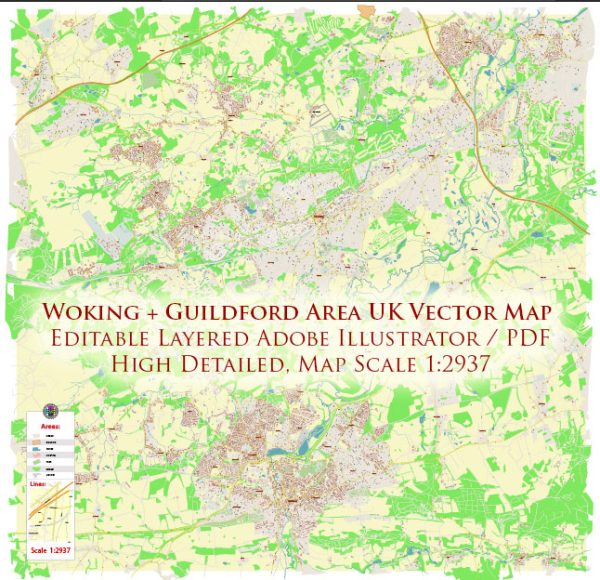Woking and Guildford are both historic towns in Surrey, United Kingdom, each with its own unique history of urban development.
Guildford:
Early History: Guildford has a rich history that dates back to Saxon times. It is believed to have been established in the 6th or 7th century. The town’s name is derived from the Saxon word “Gyldeford,” which means “golden ford,” referring to the golden sand on the River Wey at the ford.
Medieval Period: Guildford grew in importance during the medieval period, becoming a thriving market town. The construction of Guildford Castle began in the 11th century, and it played a significant role in the town’s development. The castle, with its iconic square keep, stands as a reminder of Guildford’s medieval past.
Tudor and Stuart Eras: During the Tudor and Stuart eras, Guildford continued to prosper as a market and manufacturing center. The High Street, with its historic buildings, reflects the architectural style of these periods.
Industrial Revolution: The arrival of the railway in the 19th century further stimulated Guildford’s growth, connecting it to London and other major cities. This transportation link facilitated industrial development and increased the town’s accessibility.
20th Century: Guildford expanded significantly in the 20th century, experiencing suburbanization and population growth. The town became a commuter hub for London, attracting residents seeking a balance between urban amenities and a more rural lifestyle.
Woking:
Early History: Woking’s history is also ancient, with evidence of human habitation dating back to the prehistoric era. However, it gained prominence during the medieval period when it became a market town.
19th Century: Woking underwent substantial changes in the 19th century. The Basingstoke Canal, completed in 1794, passed through Woking, facilitating transportation and trade. The arrival of the railway in 1838 further boosted Woking’s accessibility and spurred economic development.
Victorian and Edwardian Eras: During the late 19th and early 20th centuries, Woking became known for its role in the literary world. H.G. Wells, the famous science fiction writer, lived in Woking for a time and set parts of his novel “The War of the Worlds” in the town.
Post-War Period: After World War II, Woking experienced suburbanization and a housing boom. The town’s population grew as it became a desirable residential area, benefitting from its proximity to London and the surrounding countryside.
Contemporary Development: Both Woking and Guildford continue to evolve in the 21st century. Urban development projects, infrastructure improvements, and efforts to preserve historical landmarks contribute to the ongoing transformation of these towns, ensuring they remain vibrant and attractive places to live and visit.


 Author: Kirill Shrayber, Ph.D.
Author: Kirill Shrayber, Ph.D.